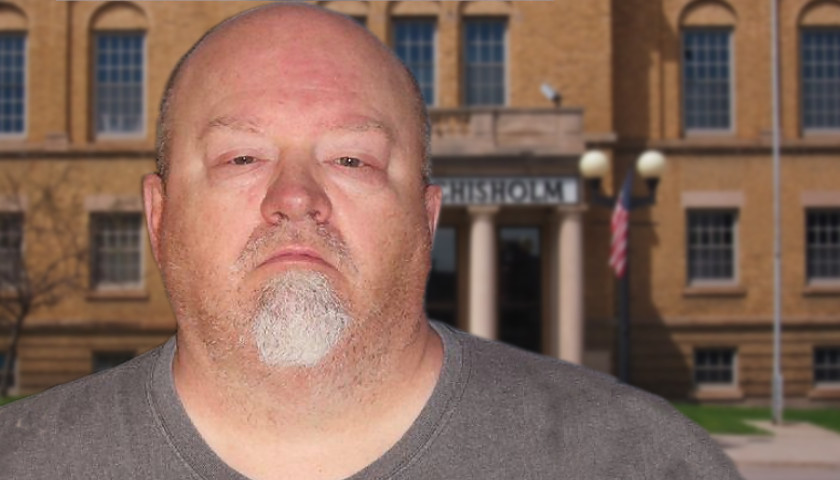Michael Allen Carbo, Jr., of Chisholm, (pictured above) is the latest suspect to be identified using forensic genetic genealogy, a method in which law enforcement works with genetic genealogists to link crime scene DNA to commercial genealogy databases. He is the prime suspect in the murder of Nancy Daugherty over thirty years ago.
Although investigators went on to collect DNA samples from over 100 people, and the Minnesota’s Bureau of Criminal Apprehension (BCA) was able to create a full DNA suspect profile from evidence at the scene, the case went cold. The problem was, Carbo never committed any high-level crimes that warranted his DNA making it into a state database.
It was only when investigators in the Daugherty cold case turned over the crime scene DNA to genetic genealogists earlier this year that they got their first real lead. Within months, genealogists were able to match relations between the crime scene DNA and the profiles in genealogy websites. Detectives applied the new pool of suspects with public records like marriage certificates, birth records, obituaries, and even social media profiles to narrow in on Carbo.
Last Wednesday, Carbo consented to give his DNA to investigators. The BCA confirmed the match.
The series of events that led to Carbo’s arrest in the Daugherty case is not unique – it’s becoming the new standard for law enforcement investigations. Through forensic genetic genealogy, many who upload their DNA information into genealogy sites may inadvertently involve themselves in criminal investigations.
In its infancy, the little world of genetic genealogy applied itself to building family trees. Volunteers founded the community, invented the tools of the trade, and a handful created database websites – some commercial like Ancestry.com, and some free like GEDmatch. None of the genetic genealogists originally intended for their little world to lend itself to law enforcement investigations in those early days.
“It was built for finding ancestors. It was built for reuniting families, and now it is being used essentially to get families to put their members in jail,” said genealogist Shannon Christmas.
Every object we touch receives some of our DNA – but any at a crime scene is only useful insofar as it has a DNA match linked to a name elsewhere. Prior to forensic genealogy, detectives had only a limited amount of data available in law enforcement databases to reference.
Traditional DNA analysis for evidence makes inclusions and exclusions to craft a possible suspect profile. In the world of forensics, two foremost profiling methods are phenotyping and ancestry. Phenotyping is the process of identifying DNA markers to determine possible hair, eye, and skin colors as well as ancestry-informative markers (that which indicates a person’s origins). Such a “phenotype report” can produce computer-generated images of what the suspect might look like as well as their age progression.
Ancestry focuses on an allele or single nucleotide polymorphism (a variation in a single base pair) at one particular location in DNA. This indicates where a person may originate from, because these ancestry markers usually derive from one particular part of the world.
Even with all that information, cases like Nancy Daugherty’s went cold if a suspect’s DNA was never uploaded into those law enforcement systems for previous crimes.
Several genetic genealogists realized that their line of work could be beneficial to helping law enforcement, but it would require a large database of the public’s DNA. Their theory was proven correct after commercial DNA testing services exploded in popularity over the past decade.
Dr. Barbara Rae-Venter was one of the first genetic genealogists to bridge the gap for law enforcement: she uploaded crime scene DNA from the Golden State Killer (GSK) case into GEDmatch.com. The raw data file led Rae-Venter and her team to Joseph DeAngelo as their prime suspect. Though this was not the first case to reap the benefits of forensic genetic genealogy, it was the first to popularize its use.
Immediately after DeAngelo’s arrest in the GSK case, famed genealogist CeCe Moore began work with a forensic consulting firm that led to the first genetic genealogy case to appear before a jury. Like this latest cold case in Minnesota, forensic genetic genealogy cracked a case that had stumped investigators for over thirty years.
“Without genetic genealogy, this case never would have been solved,” said a lead detective on the case, James Scharf. “CeCe Moore did in two hours what twenty or thirty cops couldn’t do in thirty years of working on this case. That’s how powerful genetic genealogy is in solving crimes.”
From the breakthrough of the GSK case in April 2018 until the end of last year, over 70 other suspects were identified through forensic genetic genealogy.
Not everyone is as pleased with the new method. Critics point out the lack of formal oversight for police uploading crime scene DNA into genealogical databases; the only protocol available is police adherence to each website’s unique terms of service.
The lack of formal oversight caused controversy when police were allowed to input data secretly in GEDmatch.com, a free database where users could upload their DNA information obtained from commercial DNA testing. Police’s work effectively violated the site’s own terms of service, even though police acted with one co-founder’s permission.
As a result of the backlash GEDmatch faced, it updated its site so that users had to opt in to be included in law enforcement searches. This change was a huge blow for investigators: where before they had around 2 million DNA uploads at their fingertips, now they can only access around 163,000 profiles – a meagre 8.15% of what they had before. Other sites, like FamilyTreeDNA, are avoiding such controversy by openly encouraging their users to allow law enforcement to access their DNA.
Only last winter did the Department of Justice put into effect an interim policy for federal investigators making use of genealogy. At the federal level, genealogy can only be used in cases with violent or attempted violent crimes, only after other leads are explored, and law enforcement officials must identify themselves when utilizing these genealogy resources.
However, state and local agencies are not held to these federal guidelines. Much to public chagrin, their use of forensic genetic genealogy is still without protocol. There are even a few cases where people have been falsely accused of crimes.
As for murder suspect Michael Carbo in the case of Nancy Daugherty, the St. Louis County Attorney’s Office is expected to charge him Thursday morning. The investigation is still ongoing, with bail set at $1 million.
– – –
Corinne Murdock is a reporter at The Minnesota Sun and the Star News Network. Follow her latest on Twitter, or email tips to [email protected].
Photo “Michael Allen Carbo” by Chisholm Police Department and “Chisholm City Hall” by McGhiever CC4.0.




